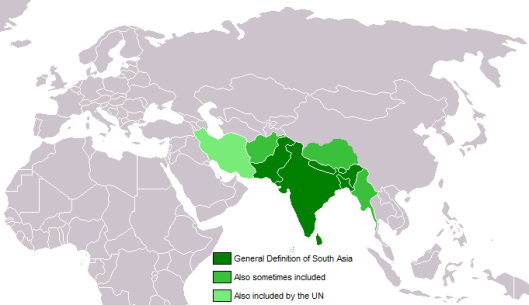Tags
Afghanistan, Asia, India, Middle East, Pakistan, School of Oriental and African Studies, South Asia, Sri Lanka
I took a course on the Government and Politics of South Asia at the School of Oriental African Studies (SOAS) in London during my year abroad — the first term covered India, while the second term covered Pakistan, Bangladesh, Sri Lanka, Nepal, Burma and Afghanistan.
“Why are we covering Afghanistan?” was one of the first questions, to everyones surprise. “Isn’t it part of central Asia?” she went on.
It’s an interesting question, though one I would have never thought of asking. I study South Asia and the Middle East. A country like Afghanistan would for me fall into one of those categories. But now there’s a third possibility that emerges.
It’s a confusing world that we live in: this summer I worked with GlobalPost, where both Afghanistan and Pakistan came under the “Middle East.”
The world as I knew it was being distorted. Deconstructed. But it also forced me to finally ask the inevitable: what is the purpose of assigning such categories? It’s not a simply geographic answer. It’s geostrategic, or geo-political, whatever you want to call it.
For me an Indian, whose grandparents crossed the Indo-Pak border from Lahore, I say, how can you not lump India and Pakistan in the same category? After all if you study history prior to 1947 after all, there was no geographic boundary. It’s the South Asian subcontinent.
But then what about Afghanistan? If you’re working in a newsroom in the U.S., covering contemporary stories, there’s a broader purpose for assigning Afghanistan and Pakistan to the same category too.
It’s a dynamic world that we live in. Diplomacy and politics on the ground are constantly working to change relationships between nations. To create new nations and new boundaries, out of which arise new categories.
So where does South Asia start and where does it end? Also are boundaries as porous as we like to describe them thanks to globalization? If you’re India and Pakistan the simple answer would be no, if you’re Afghanistan and Pakistan the answer may be more complex.
There is scope for endless categorization when it comes to the confusing and expansive region of South Asia. But there’s always a purpose behind why we choose to include or not include some countries under certain demarcators. What’s interesting is to ask “why” and try to understand the historical and present circumstances at work, that shape these categories and our own understanding the world as we know it. Don’t just take it for granted.
For now, here’s map that might provide you with some answers. It’s the map which my professor at SOAS sent us, in response to the question on the first day of class.
Also, for the purpose of this blog, and the SAPAC group, we do choose to include Afghanistan in South Asia!

